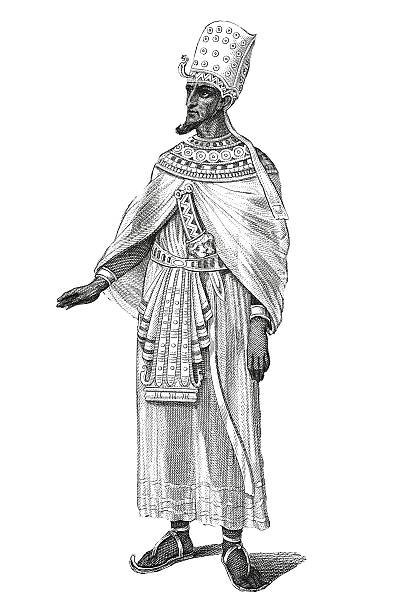What were the qualifications and lifestyles of the Egyptian Priests?
Ancient Egypt, one of the world’s most enduring civilizations, was deeply steeped in religious traditions. At the heart of this spiritual life were the priests. The priesthood of Ancient Egypt was a critical institution, responsible for maintaining the gods’ favor, interceding on behalf of the people, and preserving order in the universe. Their qualifications and lifestyles were unique and intriguing.
Qualifications and Lifestyles of Ancient Egyptian Priests
Qualifications
The priesthood in Ancient Egypt was not an all-encompassing spiritual calling, as seen in many religions today. Instead, it was often a part-time role, with priests serving for a set period before returning to their regular occupations. Priesthood was often hereditary, passed down through families, but people could also rise through the ranks based on their qualifications.
- Family Lineage: In many cases, priesthood was hereditary. Being born into a family of priests automatically qualified individuals for the role.
- Education: Priests were usually literate, with a good understanding of religious texts, rituals, and the complex Egyptian hieroglyphic system. Many priests also had knowledge of astronomy, mathematics, and medicine.
- Purity Requirements: Priests were required to be ritually pure. They practiced shaving to maintain cleanliness, including the removal of all body hair. They also followed strict dietary regulations, avoiding fish (considered impure) and eating only specific types of meat.
- Gender: Initially, priesthood was predominantly male, but as the centuries passed, more women took on religious roles. By the time of the New Kingdom, many temples had a high priestess.
Lifestyles
The lifestyle of an Egyptian priest was disciplined and tightly regulated due to the sacred duties they performed.
- Spiritual Duties: Priests performed numerous religious rites, from daily temple rituals to annual festivals. They cared for the temple’s deity statue, providing food, clothing, and incense offerings.
- Cleanliness Rituals: Priests were expected to maintain a high level of ritual purity. They bathed multiple times a day before performing temple rituals. They also wore clean linen garments while serving in the temple.
- Dietary Rules: They adhered to strict dietary guidelines, which included restrictions on the consumption of certain foods deemed impure, such as fish.
- Teaching and Administrative Roles: Many priests acted as teachers and administrators. They were often involved in the running of Egypt’s temple schools and oversaw the management of temple resources and lands.
- Part-time Service: Most priests did not serve continuously but worked in the temple for a month before returning to their regular lives and occupations for the next three months. The rotation system allowed priests to maintain their personal lives and professions outside the temple.
Being an Egyptian priest required a commitment to maintaining ritual purity, performing religious duties, and managing temple affairs. Despite the strict regulations they had to adhere to, the prestige associated with the role, coupled with the spiritual satisfaction and the practical benefits it provided, made the priesthood a highly respected institution in Ancient Egyptian society.




